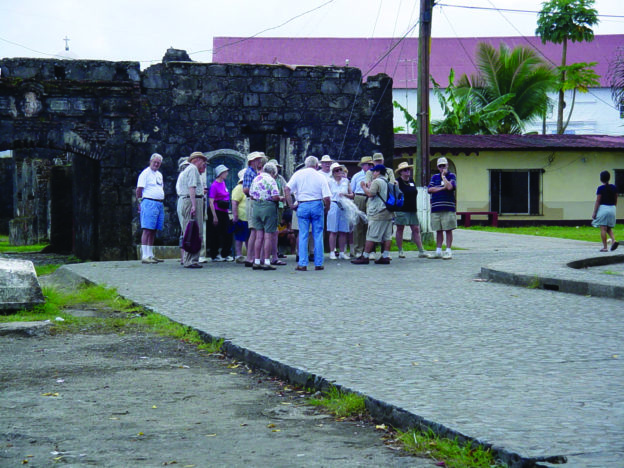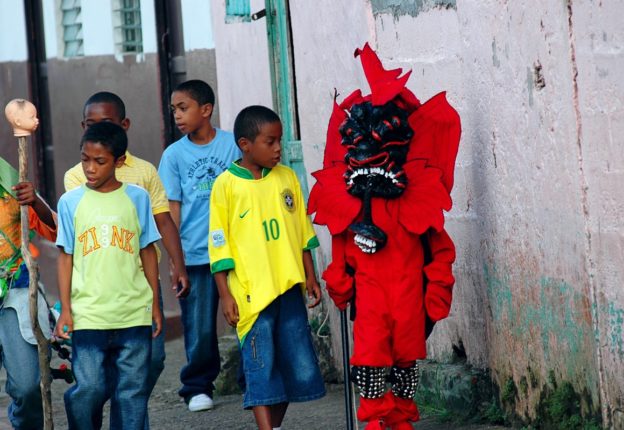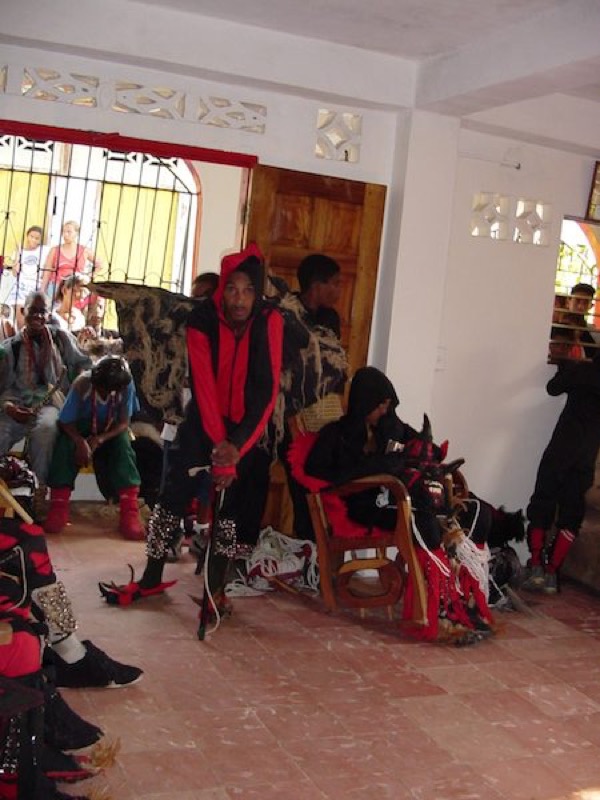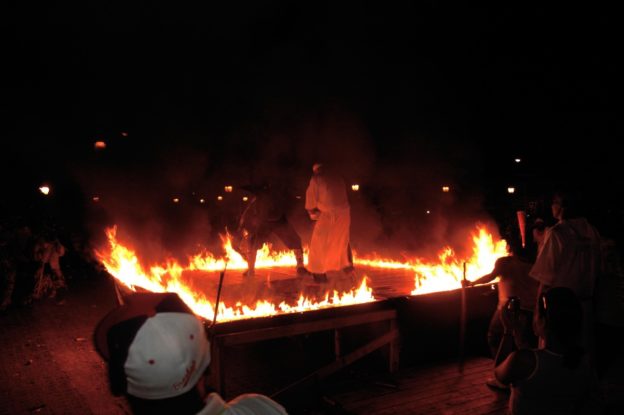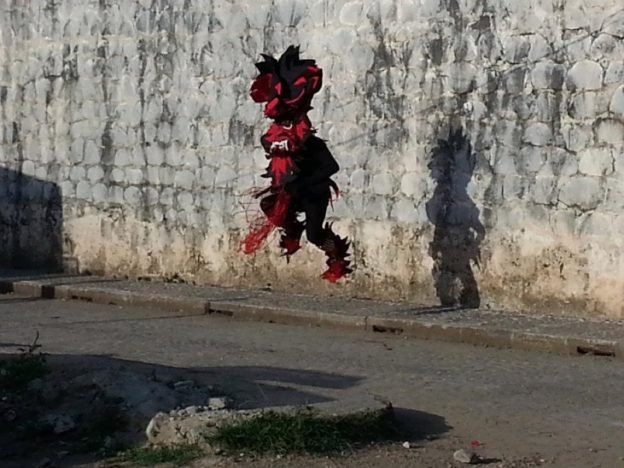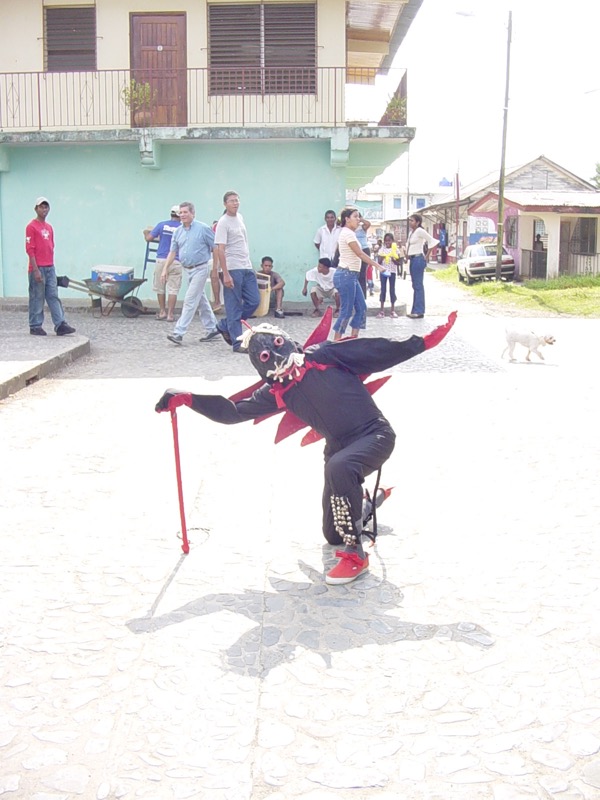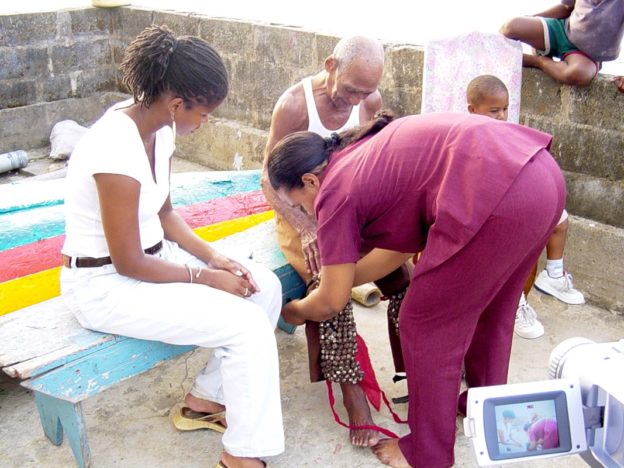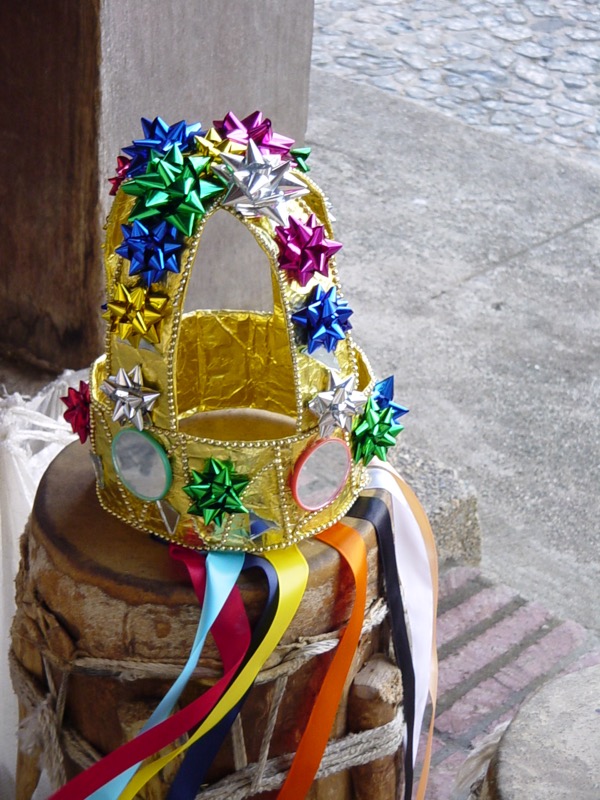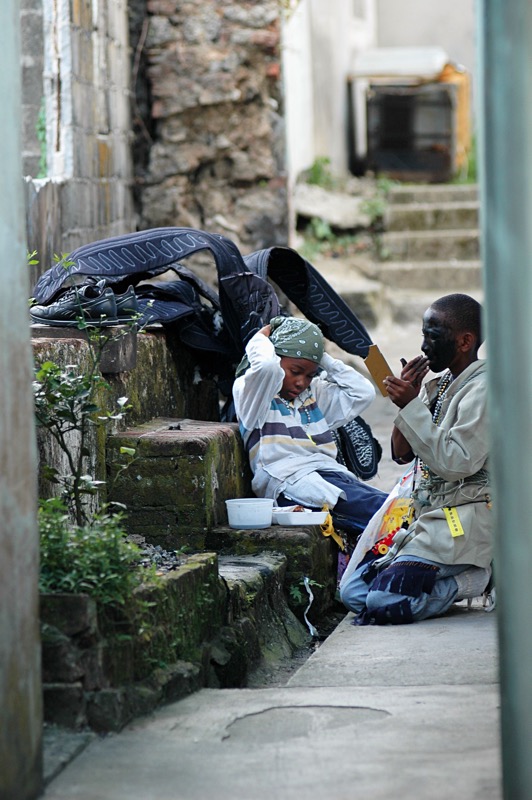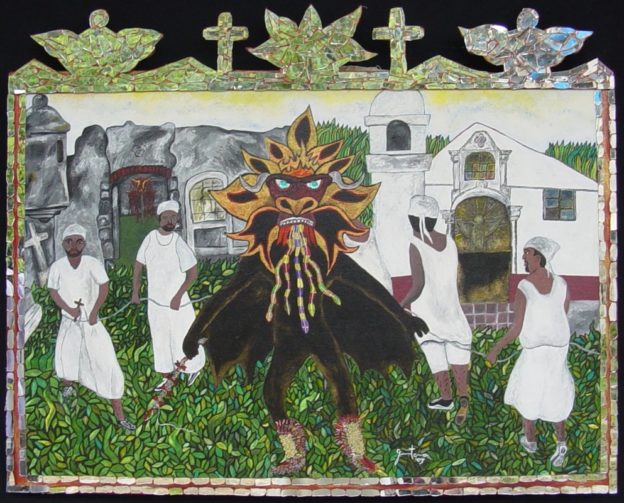In this excerpt, Maestro Andrés discusses the impact of tourism on the tradition, including the monetization of various aspects and changes in costuming. In describing the current tradition, he references the impact of the “the road” on the town. At this point in the recording, the tape appears to have sped up causing distortion.
In this excerpt, Jiménez discuses the ways in which the 20th century notion of the devil character in the Congo tradition of Panama was “born” in Portobelo and discusses the ways in which his mentor in the tradition, Celedonio Molinar, brought back the practice of “Blessing the Devils.”
In this excerpt, Jiménez discusses how he began to play the role of the Major Devil character in the Congo tradition of Portobelo, Panama when Carlos Chavarria took a sabbatical from the role to study abroad in Russia.
In this excerpt, Molinar discusses a few of the changes that he has witnessed in the devil character’s embodiment within the tradition that displease him and responds to Arturo Lindsay’s question regarding the escalating violence he has witnessed with the way some younger practitioners wield their whips.
In this excerpt, Solís discusses the relationship between the economy and the increasingly violent ways in which younger generations of devils within Congo traditions of Panama embody the character.
In this excerpt, Molinar discusses how he came to play the role of Major Devil in Portobelo. And how he reintroduced the practice of “Blessing” or “Baptizing” the Devil.
In this excerpt, Molinar discusses how he learned the role of Major Devil and the tradition of “Blessing the Devil” from a Portobelo native named Viudo Ceballos who had moved to Nombre de Dios. He also describes the way the devil tradition was practiced in Portobelo when he arrived there in 1945.
In this excerpt, Esquina discusses the changes she has seen in the Congo tradition over the course of her lifetime. Specifically, she talks about changes that she has witnessed in ways in which younger practitioners who perform the role of devil in other communities sometimes put razor blades in their whips, which violates the nature of the game.
In this excerpt, Esquina discusses the changes she has seen in the Congo tradition over the course of her lifetime. Specifically, she talks about the rare existence of two palacios in 2003 and the shifting commitment of Congo practitioners who once participated in the tradition exclusively and without interruption during carnival season before the road was constructed in the early 1970s, which connected Portobelo and the rest of the Coasta Arriba to the broader Republic.
In this excerpt, Esquina discusses the changes she has seen in the Congo tradition over the course of her lifetime. Specifically, she talks about changes that she has witnessed in ways in which the devil character is played.
